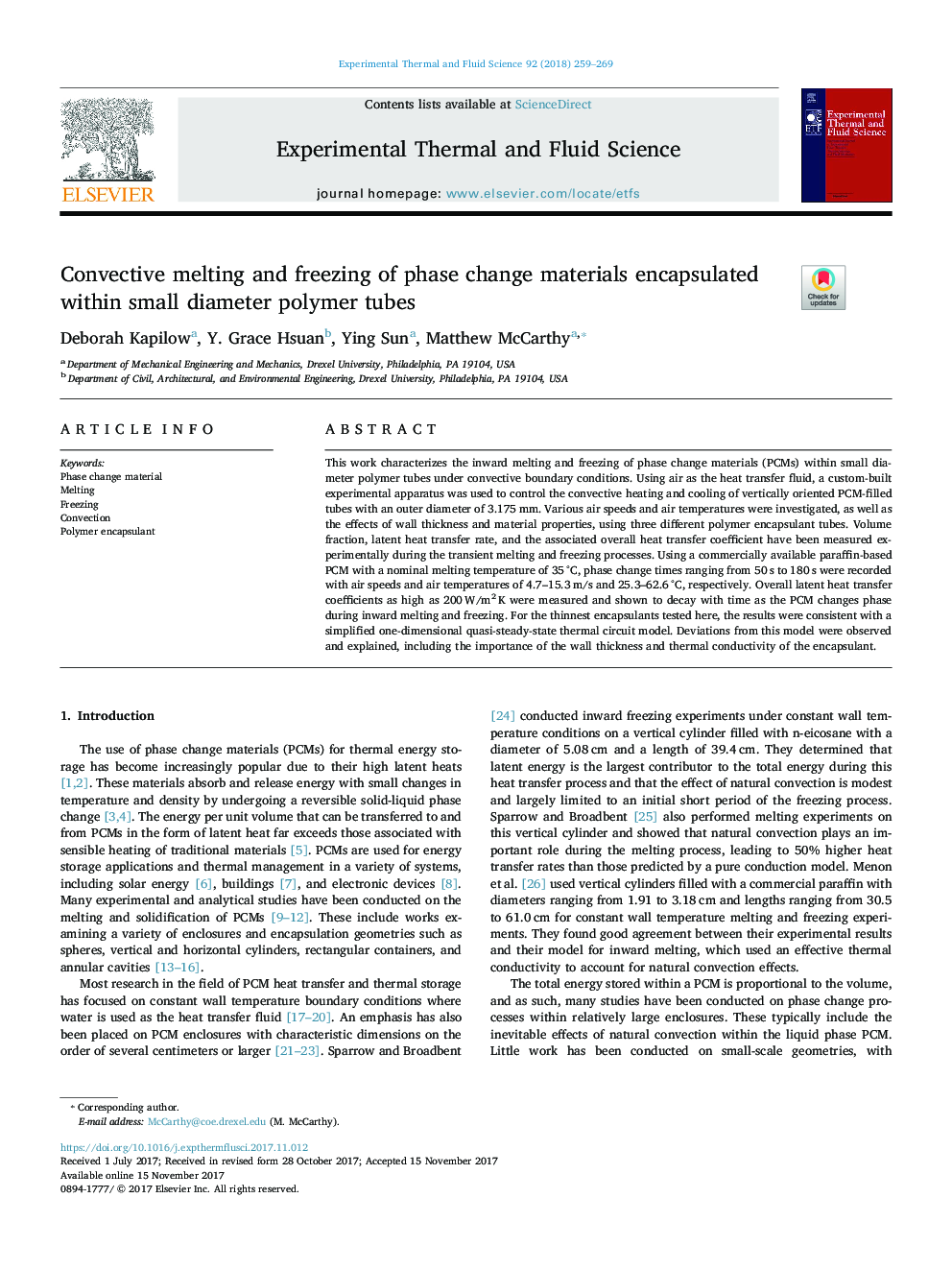| Article ID | Journal | Published Year | Pages | File Type |
|---|---|---|---|---|
| 7051837 | Experimental Thermal and Fluid Science | 2018 | 11 Pages |
Abstract
This work characterizes the inward melting and freezing of phase change materials (PCMs) within small diameter polymer tubes under convective boundary conditions. Using air as the heat transfer fluid, a custom-built experimental apparatus was used to control the convective heating and cooling of vertically oriented PCM-filled tubes with an outer diameter of 3.175â¯mm. Various air speeds and air temperatures were investigated, as well as the effects of wall thickness and material properties, using three different polymer encapsulant tubes. Volume fraction, latent heat transfer rate, and the associated overall heat transfer coefficient have been measured experimentally during the transient melting and freezing processes. Using a commercially available paraffin-based PCM with a nominal melting temperature of 35â¯Â°C, phase change times ranging from 50â¯s to 180â¯s were recorded with air speeds and air temperatures of 4.7-15.3â¯m/s and 25.3-62.6â¯Â°C, respectively. Overall latent heat transfer coefficients as high as 200â¯W/m2â¯K were measured and shown to decay with time as the PCM changes phase during inward melting and freezing. For the thinnest encapsulants tested here, the results were consistent with a simplified one-dimensional quasi-steady-state thermal circuit model. Deviations from this model were observed and explained, including the importance of the wall thickness and thermal conductivity of the encapsulant.
Related Topics
Physical Sciences and Engineering
Chemical Engineering
Fluid Flow and Transfer Processes
Authors
Deborah Kapilow, Y. Grace Hsuan, Ying Sun, Matthew McCarthy,
